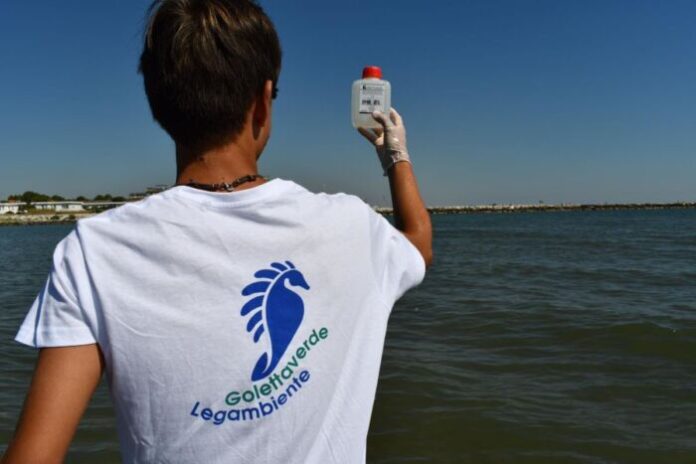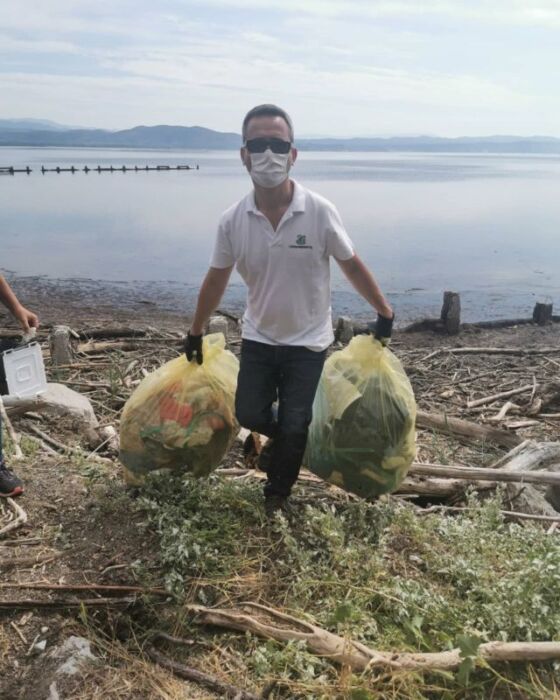
Critical balance for the two Legambiente Gulets, Goletta Verde and Goletta dei Laghi, which this summer monitored the state of health of the Italian sea and lakes for more than one month. To speak clearly are the data collected by the environmental association: 361 total points sampled in 18 regions and 28 Italian lakes with 1 point every 3 results beyond the legal limits along the coasts and 1 out of 4 in lakes. The bad purification which remains the main enemy of the sea and inland waters.
The major problems were mainly found on the Tyrrhenian coast, close to the mouths of rivers, canals and canals which, flowing into the sea, carry with them sometimes very high bacterial loads. With a worrying situation confirmed both in various southern regions such as Campania, Calabria and Sicily, where widespread critical issues persist related to the absence of purification plants and connection to the sewerage network, and in Central Italy, especially in Lazio.
The positive note is the charge of the over 300 volunteers and volunteers of the Legambiente territorial circles who this summer helped the technical team of the environmental association in sampling and monitoring activities in the waters and in finding and reporting the critical issues that threaten inland waters and coastal. A great citizen science action that this year, more than ever, was the heart of the two campaigns which, due to compliance with the restrictions imposed by the pandemic, were unable to take advantage of the classic coast-to-coast itinerary on board the boat.
“Also this year the trip of the two Golette – declares Giorgio Zampetti, general manager of Legambiente – confirms that in Italy the bad purification remains one of the main unfinished works of our country, for which we have already been condemned by the EU to pay 25 million euros, to which 30 are added every six months of delay in compliance. To pay the price are the citizens and above all the quality of the waters of our sea and our lakes, also threatened by waste and environmental illegality. For this reason, in addition to more controls and better tools to monitor the territories, it is urgent that the plants be adapted and the sewer and waste water purification network completed ”.
Legambiente reminds that the monitoring of Goletta Verde and Goletta dei Laghi does not want to replace official controls, but aims to find the critical issues still present in the purification systems to remedy the pollution of our seas and lakes. The monitoring in question mainly took into consideration the points chosen on the basis of the presumed “greater risk” of pollution, identified by the reports not only of the Legambiente clubs but of the citizens themselves through the SOS Goletta service (200 reports collected). The investigated parameters are microbiological (intestinal Enterococci, Escherichia coli) and the samples in which at least one of the two parameters exceeds the limit value provided by the legislation on bathing water in force in Italy are considered as “polluted” (Legislative Decree 116/2008 and implementing decree of 30 March 2010) and “heavily polluted” if at least one of the two parameters is exceeded by more than double the regulatory value.

The fight against marine litter and data on floating waste
In the last 3 years of research at sea (from 2017 to 2019) on 1756 km monitored, Goletta Verde counted 111 waste for every km of sea and at least 1 waste out of 3 is disposable plastic, mostly packaging, bags, polystyrene boxes and bottles. The situation does not improve on the beaches: during the stages of Goletta Verde and Goletta dei Laghi, the volunteers of Legambiente this summer organized cleaning initiatives after months of stoppage of activities, also continuing the monitoring of waste on the beaches. Plastic, which constitutes 83% of waste found and, in particular, disposable waste is most worrying: on Italian beaches at least 42% of waste found is single-use plastic, 3 are found for every meter of sand.
“Covid-19 – declares Serena Carpentieri, deputy director of Legambiente – risks making the progress made to reduce disposable plastic less effective. To stem one of the most serious environmental problems on the planet, the marine litter, and to prevent a new boom in disposable products, it is essential that our country does not frustrate the efforts made to date. For this reason, we hope that Italy will bring forward, before July 2021, the transposition of the European Directive that prohibits and limits some single-use plastics and that it approves as soon as possible the Salvamare law, inexplicably stopped for months in the Environment Commission in the Senate, which would allow fishermen to bring back the waste accidentally caught in the nets. To date, as our monitoring shows, plastic continues to be the most widely found material along the coasts, without counting the thousands of microparticle particles dispersed in the waters of the sea, lakes and rivers ”.



































